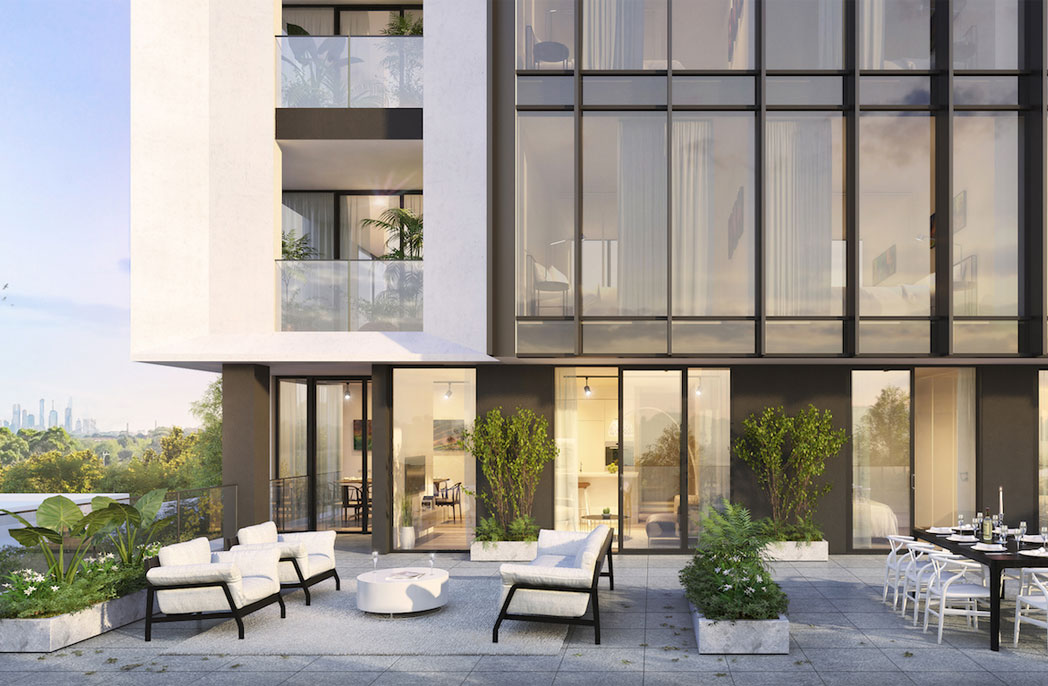
BWA’s TJ house
BWA’s TJ house
Share
All photography by LightStudies.
The TJ house comprises the fitout of a residential apartment within a new eight-storey building in Braddon, one of Canberra’s developing inner urban centres. The clients’ clear vision for the desired character of the space strongly influenced the detailing and material choice. The fitout has an industrial character, partly reminiscent of the old workshops common throughout Braddon, and is a reflection of the client’s life, which involved a lot of working with complex machinery components.
The palette of steel plate, concrete, glass, recycled brick and timber combines to give a contemporary and individualised character to this apartment. There is a consistency to the detailing that provides a cohesive link between the different materials used – the joinery becomes a series of furniture pieces inserted within the apartment volume.
The project includes the use of mild steel plate for benchtops, shelving, cupboard fronts and door/window reveals, and perforated steel mesh for sliding cupboard fronts and ceilings. Recycled hardwood has been used in joinery fronts, wet area benchtops, vanities and wall cladding. The steel and timber components are bespoke, individually detailed and carefully crafted.
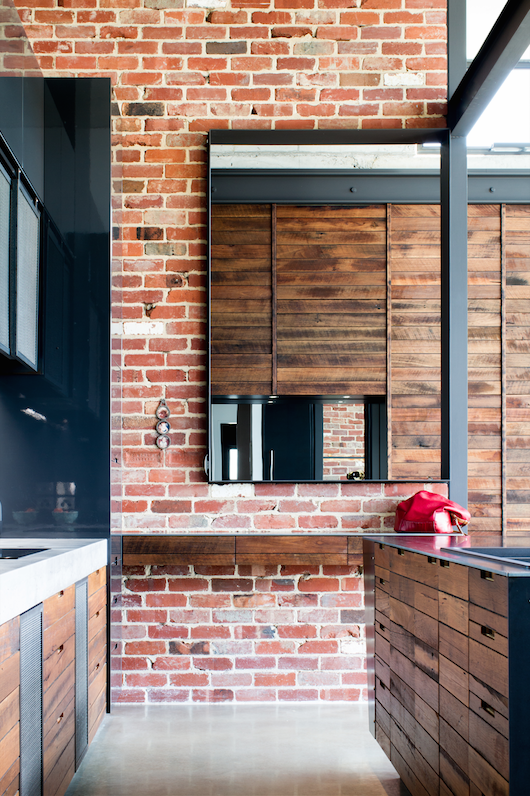
Each room is designed as a flexible space: the study has a large steel and glass sliding door that can be used to open the space up to, or close it off from, the main living area at any given time.
The apartment provides a unique living setting for the owners and has the ability to be ‘opened and closed’ as required during trips away. It is a low-maintenance dwelling with excellent access to the facilities of the nearby city.
How did the TJ house project come to you and was it a long tender process?
Ben Walker: The project was slightly unusual because it was a singular fitout of an apartment within a larger development. The clients knew the joiner they wanted to use and the joiner recommended BWA to them for architectural services, as we had worked together previously. There wasn’t a conventional tender process for this project as the work had to be separately programmed within other parts of the apartment development.
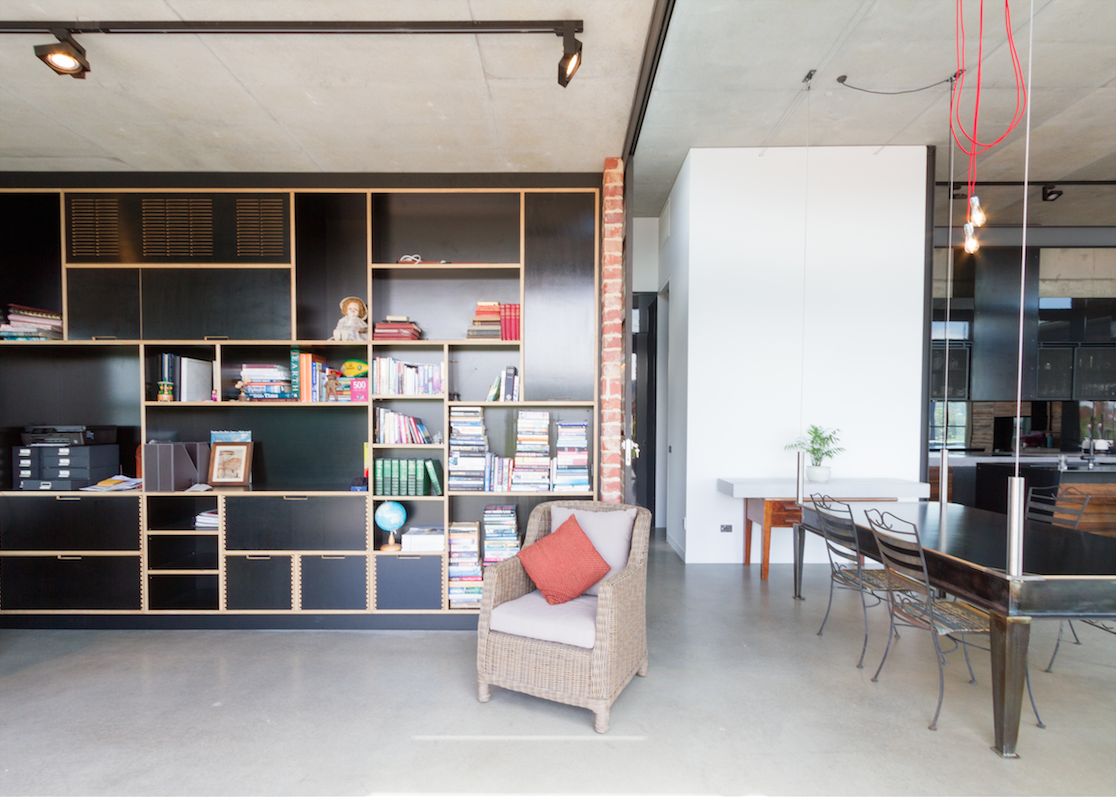
It sounds like the clients were pretty involved in the creative direction of the home?
By the time BWA came on board, the clients had worked up some clear ideas about their preferred spatial arrangements and the use of the industrial style materials. We worked together to tweak the spatial organisation and then set about working up the detailing of the joinery – everything was custom fabricated, so we had visits to the joiner’s workshop, the steel fabricators, the mesh punching plant etc. The clients had selected many of the PC (prime cost) items, so we had to carefully integrate those into each joinery element.
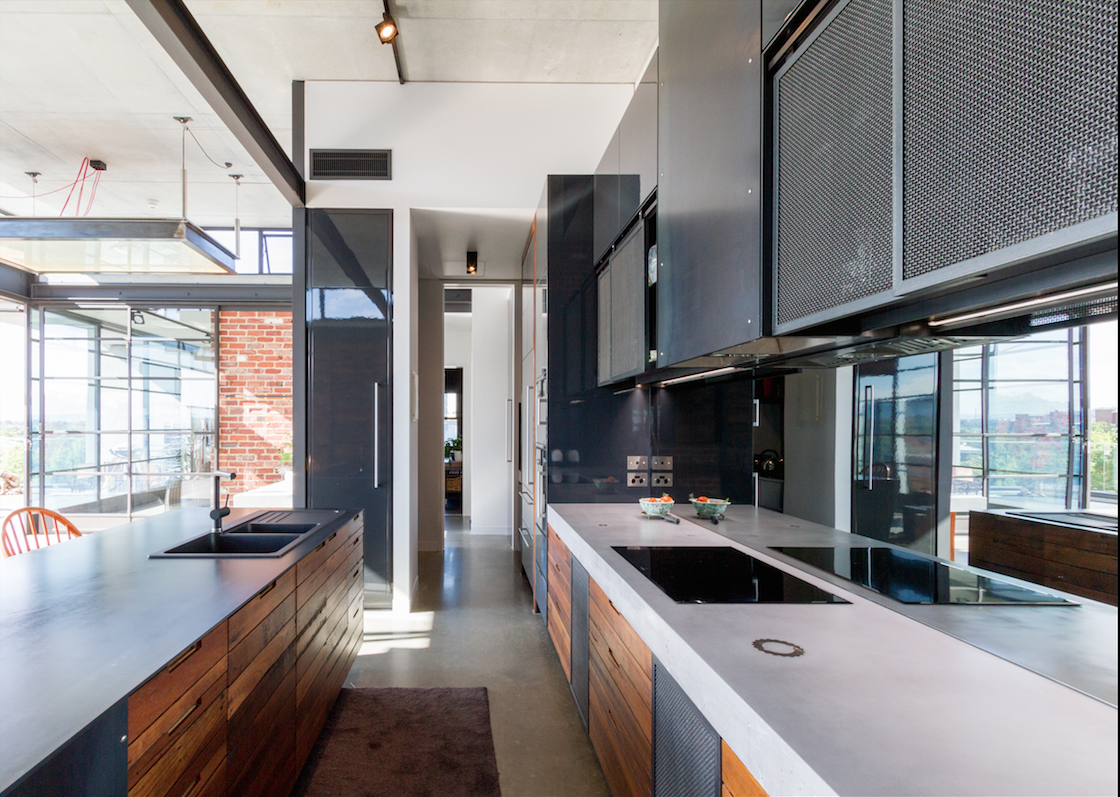
Were there any other points of inspiration for the design?
The design takes cues from penthouses in Europe, New York and other US cities. It uses steel framed windows and doors, exposes the concrete structure of floor, column and ceiling, and utilises high-level windows to maximise natural lighting.
The use of robust finishes such as recycled brickwork and roughly sawn, recycled timber is derived from the intention to have the interior mirror an industrial workshop, rather than a highly polished and stark finish. Each piece of joinery was considered in reference back to this theme.
The biggest task during documentation was trying to achieve some consistency in the detailing throughout the apartment, so even though there were a large number of different materials used they all work together as ‘happy friends’.
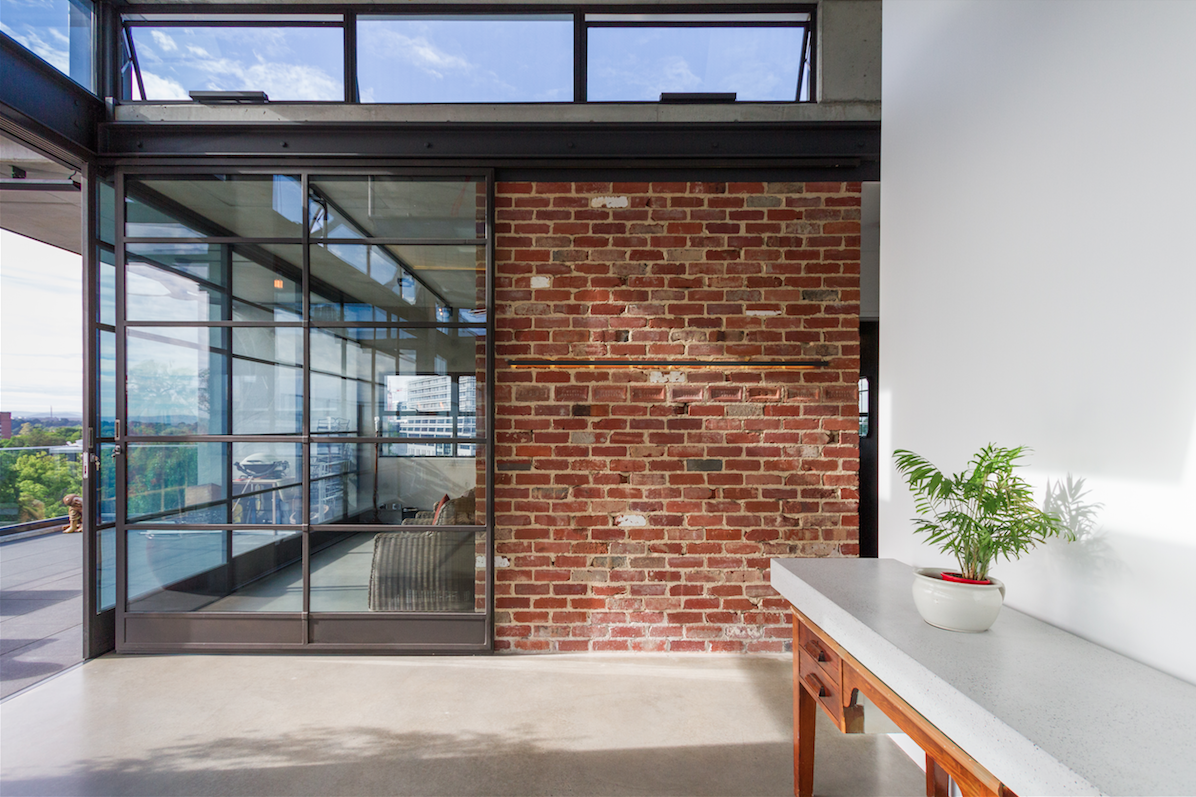
Can you talk us through the TJ house’s clever and ample storage solutions?
The main storage is along the entire northern wall of the apartment. It is clad in recycled hardwood boards, which are broken by vertical hardwood battens at regular centres. The battens hide the junction of cupboard doors and pivoting shelves so that, when everything is closed, the unit appears as a beautiful recycled timber wall at the end of the living and entry spaces. When the door fronts and panels are opened, the wall, in a way, becomes an animated pattern of panels that hinge and twist and fold in different directions. Storage cupboards, AV equipment, hydronic heating manifolds and other things are all stored within that storage space.
You have mentioned the densification and urban design of Canberra, and how it needs improving. How did you complement, and improve on, that local design language in this home?
The apartment shows the possibilities of what can be achieved when client, developer, architect and builder/joiner work closely together throughout a project. Too often the architect’s role finishes at DA (development application) stage and I believe there is significant value added to the quality of the built outcome if the architect can stay involved during the construction process.
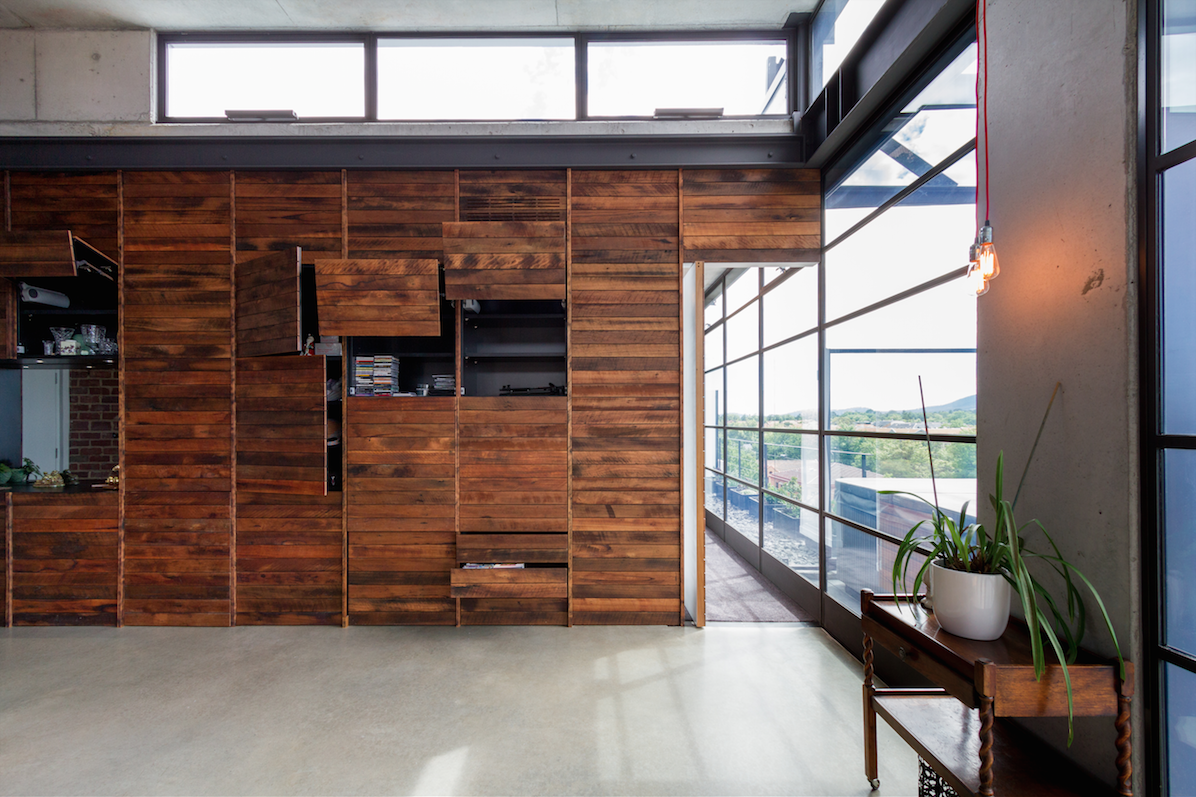
In your view, what is the most successful element of the TJ house?
The use of steel in many different ways has been a real success. It’s a credit to the client’s welding and fabrication skills – he has a history of working with machinery and actually did a fair bit of the steel fabrication himself. I would say the timber storage cupboard is also one of the biggest successes. The warmth of the recycled timber really humanises the interior, which otherwise largely comprises steel, concrete and brick.
You Might also Like

